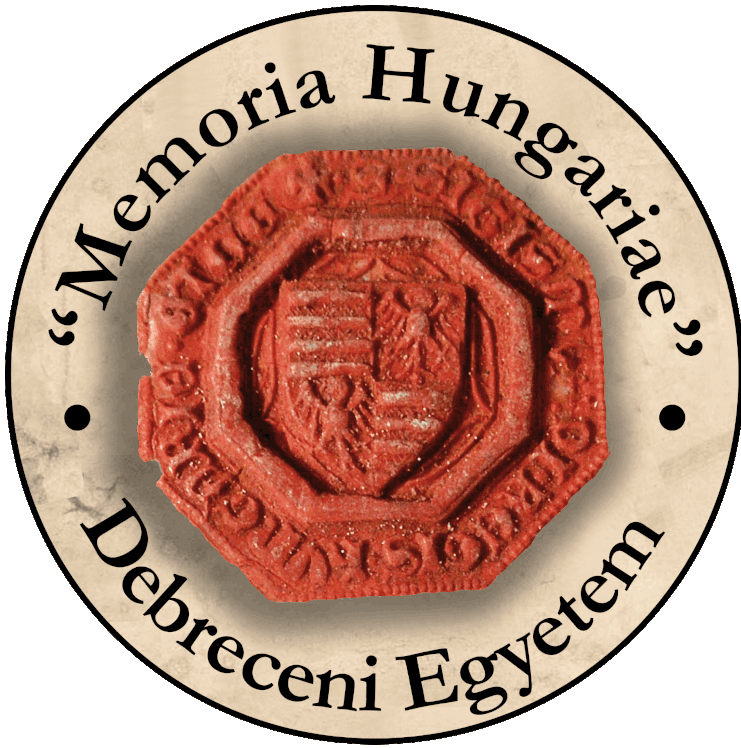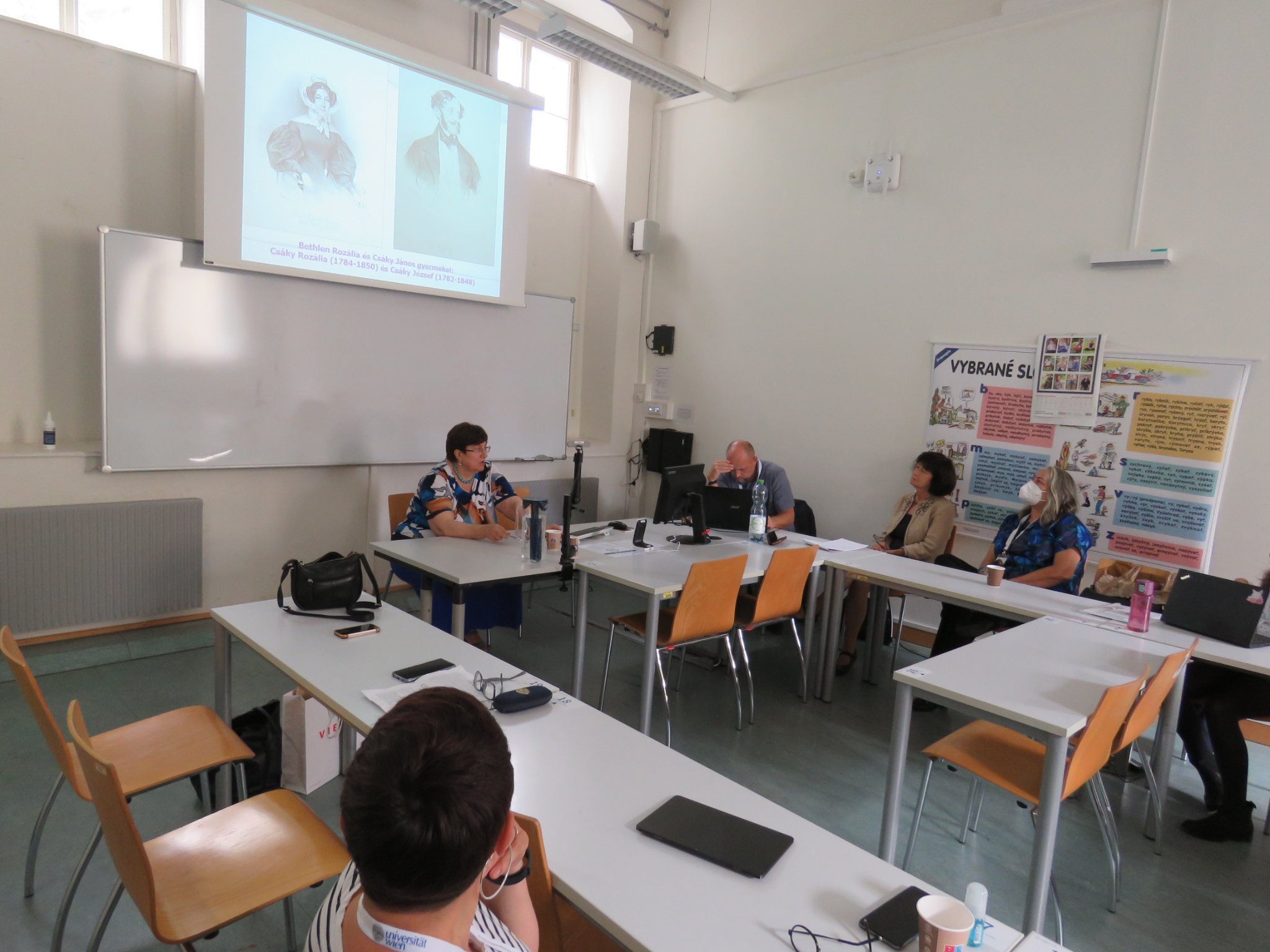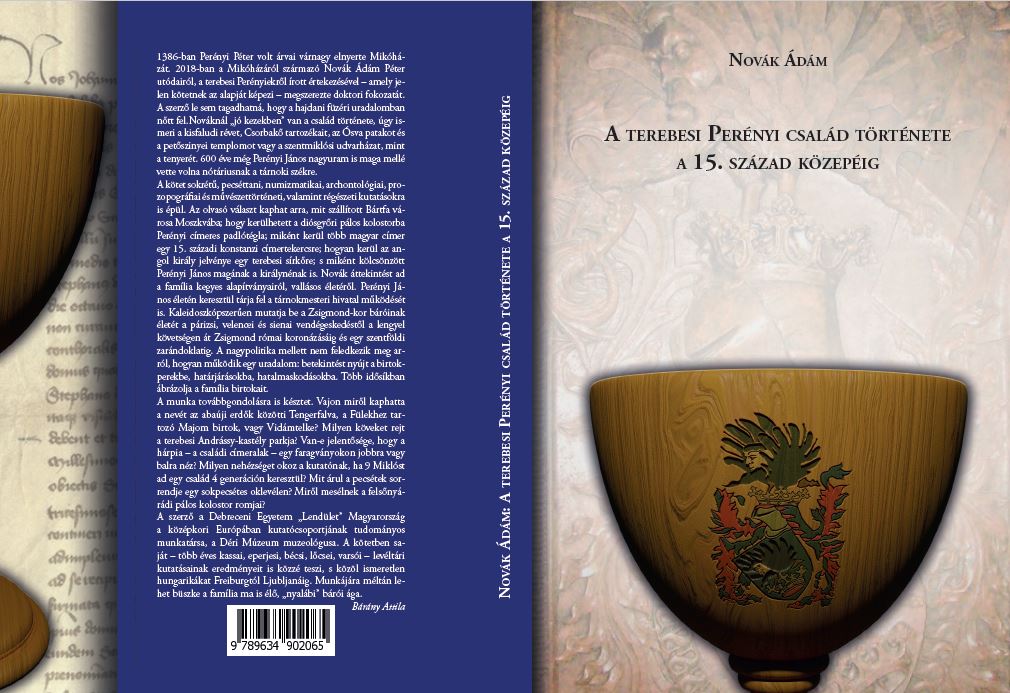MECERN 2023, Pozsony
A MECERN-hálózat célja, hogy a közép-európai történelemmel foglalkozó középkorász és kora újkoros kutatókat összefogja, és lehetőséget teremtsen egymás kutatási eredményeinek a megismerésére, illetve egyéb, a régió tanulmányozására vonatkozó közös projektek kidolgozására. Ennek egyik formája a közös, kétévenként megrendezett konferencia. A kutatócsoport tagjai a korábbi kutatási projektek (Lendület, TKP) keretében is aktívan részt vettek a MECERN-konferenciákon, előadóként és szekcióvezetőként.
A 2023-as konferencia tematikájáról és a részletes programról az alábbi oldalon lehet tájékozódni.
A 2023-as MECERN-konferencián önálló szekciót szervez Bárány Attila (29. szekció) és Györkös Attila is (39. szekció). Az alábbiakban szekciók szerinti bontásban láthatóak a kutatók előadásainak információi (cím, rövid tartalmi összefoglaló).
Információk
Időpont
2023. április 27-29., csütörtök-szombat | 08:30 – 18:30
Helyszín
Faculty of Arts, Comenius University, Bratislava (Pozsony, Szlovákia)
Részletek
Április 28. 11:00-12:30
21. szekció: „Politics, war and diplomacy in the 15th Century”
Novák Ádám előadása: Two decades in mercenary service – Mercenary leaders in the Upper Territories in the 1440s and 1450s
Novák Ádám rezümé
Április 28. 16:00-17:30
29. szekció: „Continuity and Change: the Crusades”
Bárány Attila előadása: King Andrew II of Hungary’s crusade (1217–1218). New insights
Bárány Attila rezümé
King Andrew II of Hungary (1205–35)’s venture in 1217–1218, the first phase of the Fifth Crusade brought forward a change in the history of the crusading campaigns. The loss of Jerusalem in 1187 meant an abrupt change in itself, but the subsequent efforts afterwards in the early 1190s were made in the traditional sense and “style” of the negotium Crucis, for the recapture of the Holy Sepulchre. After almost 30 years, Andrew was the sole monarch to fight in the Holy Land, but himself and the leaders of the Fifth Crusade soon needed to realize that political reality was completely different. A new understanding was that the Ayubbids were not to be overwhelmed at all in their own land. The time of this kind of crusade was over now. A new theatre of war was to be opened in order to get supplies in Egypt. The schemes to take Damietta were for a long time on the table. Andrew’s campaign was to feel out the possibilities in Palestine. The enterprise has scarcely been seen – not even in Hungarian historiography – without a detailed analysis of the international situation. It had preparatory goals. It has to be investigated in the perspective of the Levant, the Franks in the Aegean and the Latin Empire of Constantinople. The crusading enterprise has rarely been explored in the context of the preparatory phase, from the early 1210s. A major focus has to be given to Andrew’s negotiations – rather than the very acts of war in the Holy Land – with the main actors of the negotium Chrtisti, the Papacy and Latin church of Jerusalem, as well as the very partners at war, the Kingdom of Cyprus, Antioch, the ruler of Jerusalem and the military orders. Andrew’s coordination with Pope Honorius III is possible now to investigate through newly published sources (e.g., Bullarium Cyprium). The details of the campaign itself will be explored through formerly less known narratuive material, e.g., History of the patriarchs of the Egyptian Church; or, Abû’l-Faraj/Bar Hebraeus. In a way, Andrew’s crusade did not reach military results, but with a king in the Holy Land, a ruler with the sign of the Cross as a policy-maker, it did have a role. The crusade was a means to coordinate the efforts of Christendom.
Véber Zoltán előadása: The idea of the Crusade and its changes in Hunyadi’s anti-Turkish strategy
Véber Zoltán rezümé
With the emergence of John Hunyadi, the idea of the crusade gained renewed strength both in the Kingdom of Hungary and in Europe. His victories over the Ottomans in 1441–1442 raised hopes that a new crusade might be launched against them under the leadership of Hungary. This led to new illusions in Europe regarding the saving of Constantinople and the recapture of the Holy Land. However, hopes were soon to be crushed by the defeats at Varna and Kosovo, and with the fall of Constantinople in 1453, the belief in the idea of the passagium generale was also laid to rest. Crusader phraseology after 1453 still had the intention of recapturing the Holy Land, but the strategy changed, and the defence of existing positions and limited counter-actions based upon them became more and more important. These events also brought changes in the strategy of John Hunyadi. In 1455 he even thought that the liberation of the Holy Land was possible with a 100,000-strong united European crusading army, but there were already significant changes in the rhetoric after 1448 and the defensive foreign policy established by Sigismund of Luxemburg came to the fore. In my presentation, I will show how the rhetoric of John Hunyadi changed regarding the crusade, and in parallel, examine the changes that occurred in his anti-Ottoman policy behind the rhetoric.
Április 29. 11:00-12:30
31. szekció: „The Era of Louis I of Hungary and Poland”
Virágh Ágnes előadása: Evolving and constant elements of medieval corporal conceptions and senses in the context of Louis the Great’s Neapolitan campaigns
Virágh Ágnes rezümé
From the perspectives of justice seeking groups who exercised physical violence, the infliction of corporal torments and the vivid descriptions of such practices provided an opportunity to repel disruptive tendencies within the community under control through the demonstration of cautionary examples. For the sufferers and the communities they were associated with, cases of tortures served as tools of reaffirming group cohesion through a common experience of pain and misery. Martyrs, therefore, became respected models to be followed. Several passages illustrating this complex practice can also be found in the Hungarian and Italian chronicles describing Louis the Great’s military campaign against the Kingdom of Naples (1347-1350). These texts reveal that both the Hungarians and their enemies adopted a wide spectrum of instruments both in the use of punishments and to endure corporal torture, in order to consolidate their positions in the war. The authors usually heard about torture from others, and even if they witnessed a torture or execution, wrote about the suffering only as external observers. The aim of this paper is to draw on the theory and methodology of the ‘history of experience’ to provide an overview of embodied sufferings in the light of the practice and bearing of forms of retribution. In addition, from the perspective of change and continuity, I will concentrate on the ways in which medieval narratives of torments, especially those related to martyrdom, served as models for 14th-century chroniclers, although they modified these models and added their personal interpretations to fit their own agendas.
Április 29. 11:00-12:30
39. szekció: „Confessional Minorities in Late Medieval Hungary”
Györkös Attila előadása: Patrona Judaeorum? The Jewish population and Anne de Foix, Queen-Consort of Hungary-Bohemia (1502-1506)
Györkös Attila rezümé
The late medieval period was a turbulent time for the Jewish inhabitants of Jagiellonian Hungary and Bohemia. Pogroms, financial deprivations and blood libels made their lives extremely challenging.
An analysis of Anne de Foix’s documents, the French-born wife of Wladislas, king of Bohemia and Hungary (1479/1490-1516), leads us to examine how a queen-consort might also perform as patron of her country’s Jewish population. The description of her marriage celebrations in Buda (1502) mentions the presence of Hungarian Jewish community leaders with whom she remained in contact after the event. Later, she issued charters to protect the Jewish community of Bratislava (Pressburg / Pozsony) against abuse by urban and royal authorities.






